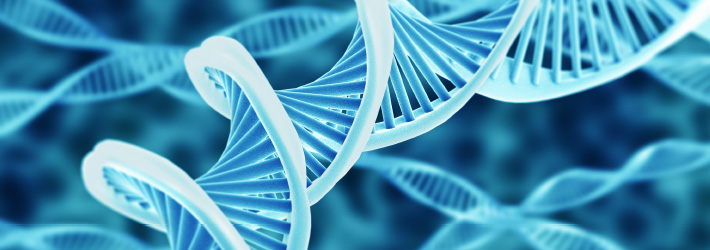Federal Circuit Affirms PTAB Determination of No Interference-in-Fact Between University of California and Broad Institute over CRISPR-Cas9 Technology
On September 10, 2018, Judges Prost, Schall and Moore of the Federal Circuit, in University of California v. Broad Institute, Inc., No. 2017-1907, affirmed the Patent Trial and Appeal Board’s determination that there was no interference-in-fact between the University of California’s patent application No. 13/842,859 and twelve patents and one patent application owned by the Broad Institute, MIT, and Harvard (collectively “Broad”), concerning CRISPR-Cas9 technology. In so doing, the Federal Circuit upheld the PTAB’s underlying finding that, “given the differences between eukaryotic and prokaryotic systems, a person of ordinary skill in the art would not have had a reasonable expectation of success in applying the CRISPR-Cas9 system in eukaryotes.”
CRISPR-Cas9 is a targeted DNA-cutting system that occurs naturally in prokaryotes, and in recent years has been used to edit the DNA of eukaryotic cells. In August 2012, UC published an article demonstrating that elements of the CRISPR-Cas9 system could be used in vitro in a non-cellular experimental environment. In February 2013, Broad’s researchers published an article describing the use of CRISPR-Cas9 in a human cell line. Both UC and Broad sought patent protection for CRISPR-Cas9 technology. UC filed its ’859 application, which claimed methods of cleaving DNA using CRISPR-Cas9, but without reference to a specific cell type or environment. By contrast, Broad obtained patents and filed patent applications limited to the use of CRISPR-Cas9 in eukaryotic cells.
The PTAB instituted an interference proceeding under pre-AIA 35 U.S.C. § 102(g) to determine whether the CRISPR-Cas9 claims of UC and Broad were “patentably indistinct,” and, if so, whether UC or Broad was the first to invent them. The PTAB applies a two-way test to determine whether claims are “patentably distinct,” asking whether the subject matter of a claim of one party, if prior art, would have rendered obvious (or anticipated) the subject matter of a claim of the opposing party, and vice versa. If this two-way test is not met, no interference-in-fact exists.
The PTAB determined that no interference-in-fact existed, because the UC ’859 application claims did not render obvious (or anticipate) Broad’s claims. Specifically, the PTAB found that (i) based upon the record evidence, including “expert testimony, contemporaneous statements made by skilled artisans, statements by the UC inventors themselves, and prior art failures,” differences between prokaryotic systems and eukaryotic systems rendered the application of the CRISPR-Cas9 system in eukaryotic cells unpredictable, (ii) in view of such unpredictability, a person of ordinary skill in the art would not have had a reasonable expectation of success in applying the CRISPR-Cas9 system in a eukaryotic cell, and (iii) UC’s claims therefore would not have rendered Broad’s claims obvious.
UC appealed the PTAB’s determination of no interference-in-fact. The Federal Circuit affirmed, holding that “the Board’s factfinding as to a lack of reasonable expectation of success is supported by substantial evidence.” The Federal Circuit acknowledged that, while some evidence could support the opposite finding (for example, the “prior art contained a number of techniques that had been used for adapting prokaryotic systems for use in eukaryotic cells”), “it is not our role to ask whether substantial evidence supports factfindings not made by the Board, but instead whether such evidence supports the findings that were in fact made. Here, we conclude that it does.”
The Federal Circuit also rejected UC’s argument that the PTAB improperly had adopted a rigid rule requiring that there be “specific instructions” in the prior art directed to CRISPR-Cas9 to establish a reasonable likelihood of success. According to the Federal Circuit, “[i]n this case, the Board found there would not have been specific instructions in the art as to CRISPR-Cas9 that would have given one of ordinary skill in the art a reasonable expectation of success, and it was ‘persuaded that the failure demonstrated with other systems would have indicated the lack of a reasonable expectation of success.’ At no point did the Board suggest it found there would not have been a reasonable expectation of success solely because there were not specific instructions in the art describing how to apply CRISPR-Cas9 in eukaryotes.”
The Federal Circuit further rejected UC’s argument that the PTAB improperly had discounted evidence of simultaneous invention of CRISPR-Cas9’s use in eukaryotic cells. The Federal Circuit noted that the PTAB had considered this evidence, but ultimately concluded that it was insufficient to support a reasonable expectation of success under the circumstances: “[t]he fact that six research groups succeeded in applying this technology in eukaryotic cells within a short period of time after [UC’s August 2012 publication] is certainly strong evidence that there was a motivation to combine the prior art in this manner. The Board expressly recognized UC’s evidence of simultaneous invention in this context, and it concluded the evidence of simultaneous invention was evidence of the motivation to combine the prior art references but did not ‘necessarily’ indicate an expectation of success prior to the completion of the experiments.”



